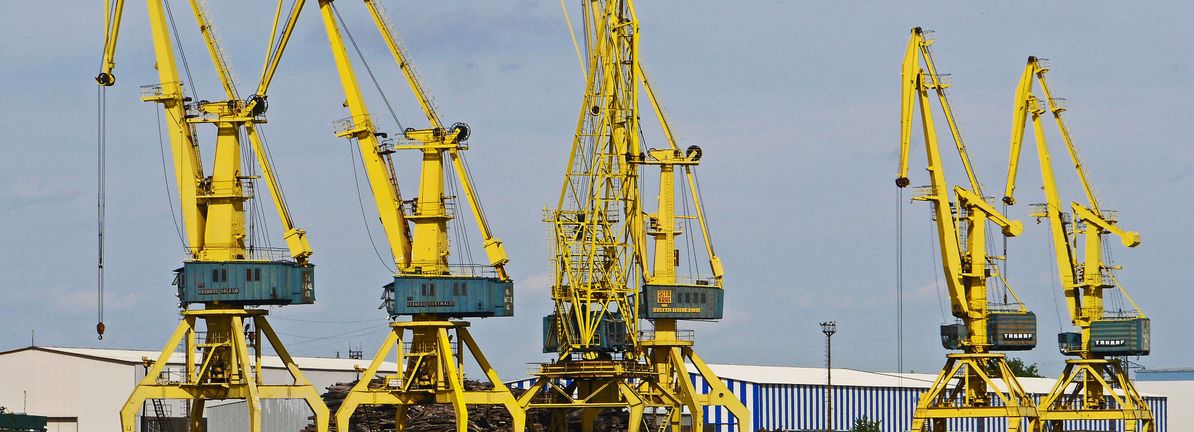
The external fund manager backed by Berkshire Hathaway’s Charlie Munger, Li Lu, makes no bones about it when he says ‘The biggest investment risk is not the volatility of prices, but whether you will suffer a permanent loss of capital.’ It’s only natural to consider a company’s balance sheet when you examine how risky it is, since debt is often involved when a business collapses. We can see that Tenaris S.A. (BIT:TEN) does use debt in its business. But the more important question is: how much risk is that debt creating?
When Is Debt Dangerous?
Debt and other liabilities become risky for a business when it cannot easily fulfill those obligations, either with free cash flow or by raising capital at an attractive price. In the worst case scenario, a company can go bankrupt if it cannot pay its creditors. However, a more usual (but still expensive) situation is where a company must dilute shareholders at a cheap share price simply to get debt under control. By replacing dilution, though, debt can be an extremely good tool for businesses that need capital to invest in growth at high rates of return. When we think about a company’s use of debt, we first look at cash and debt together.
Check out our latest analysis for Tenaris
What Is Tenaris’s Net Debt?
You can click the graphic below for the historical numbers, but it shows that as of September 2022 Tenaris had US$875.9m of debt, an increase on US$513.7m, over one year. But it also has US$1.43b in cash to offset that, meaning it has US$553.6m net cash.

A Look At Tenaris’ Liabilities
Zooming in on the latest balance sheet data, we can see that Tenaris had liabilities of US$2.78b due within 12 months and liabilities of US$743.3m due beyond that. Offsetting these obligations, it had cash of US$1.43b as well as receivables valued at US$2.43b due within 12 months. So it can boast US$336.8m more liquid assets than total liabilities.
Having regard to Tenaris’ size, it seems that its liquid assets are well balanced with its total liabilities. So while it’s hard to imagine that the US$20.4b company is struggling for cash, we still think it’s worth monitoring its balance sheet. Succinctly put, Tenaris boasts net cash, so it’s fair to say it does not have a heavy debt load!
Even more impressive was the fact that Tenaris grew its EBIT by 375% over twelve months. That boost will make it even easier to pay down debt going forward. The balance sheet is clearly the area to focus on when you are analysing debt. But ultimately the future profitability of the business will decide if Tenaris can strengthen its balance sheet over time. So if you want to see what the professionals think, you might find this free report on analyst profit forecasts to be interesting.
Finally, a company can only pay off debt with cold hard cash, not accounting profits. While Tenaris has net cash on its balance sheet, it’s still worth taking a look at its ability to convert earnings before interest and tax (EBIT) to free cash flow, to help us understand how quickly it is building (or eroding) that cash balance. Over the most recent three years, Tenaris recorded free cash flow worth 61% of its EBIT, which is around normal, given free cash flow excludes interest and tax. This cold hard cash means it can reduce its debt when it wants to.
Summing Up
While it is always sensible to investigate a company’s debt, in this case Tenaris has US$553.6m in net cash and a decent-looking balance sheet. And we liked the look of last year’s 375% year-on-year EBIT growth. So we don’t think Tenaris’s use of debt is risky. There’s no doubt that we learn most about debt from the balance sheet. However, not all investment risk resides within the balance sheet – far from it. For instance, we’ve identified 3 warning signs for Tenaris (1 is potentially serious) you should be aware of.
At the end of the day, it’s often better to focus on companies that are free from net debt. You can access our special list of such companies (all with a track record of profit growth). It’s free.
Valuation is complex, but we’re helping make it simple.
Find out whether Tenaris is potentially over or undervalued by checking out our comprehensive analysis, which includes fair value estimates, risks and warnings, dividends, insider transactions and financial health.
Have feedback on this article? Concerned about the content? Get in touch with us directly. Alternatively, email editorial-team (at) simplywallst.com.
This article by Simply Wall St is general in nature. We provide commentary based on historical data and analyst forecasts only using an unbiased methodology and our articles are not intended to be financial advice. It does not constitute a recommendation to buy or sell any stock, and does not take account of your objectives, or your financial situation. We aim to bring you long-term focused analysis driven by fundamental data. Note that our analysis may not factor in the latest price-sensitive company announcements or qualitative material. Simply Wall St has no position in any stocks mentioned.
Source link
